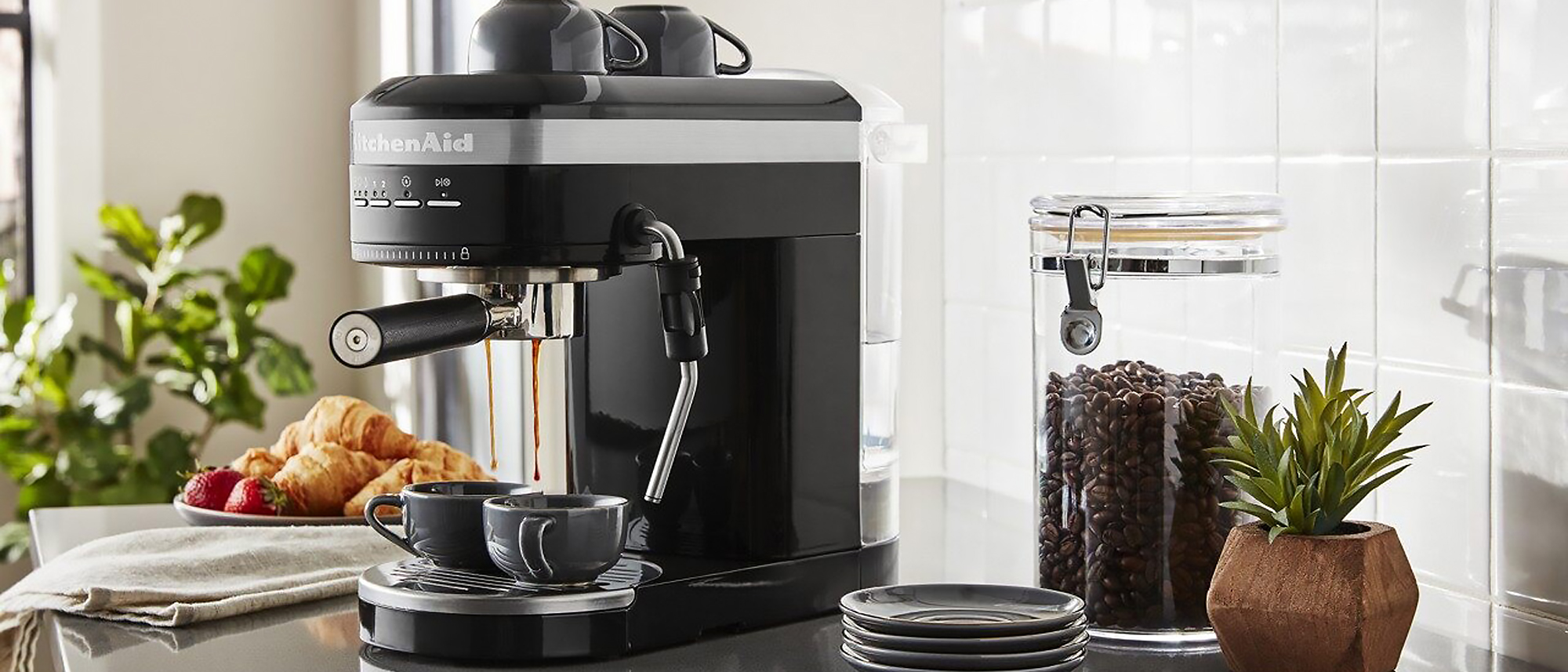Tom's Guide Verdict
The KitchenAid Artisan Espresso Machine is easy to operate and produces a quality espresso, but there’s room for improvement in the design.
Pros
- +
Attractive, streamlined and compact design
- +
Easy to use
- +
Produces delicious espresso
Cons
- -
Plastic exterior lacks quality
- -
Cups vibrate out of place when brewing
Why you can trust Tom's Guide
Dimensions: 11 x 13 x 6 inches or 28.6 x 16.2 x 33.4 cm
Materials: Plastic and stainless steel
Capacity: 50.7 fluid ounces or 1.5 liters
Settings: 1 and 2 shots, hot water, steam and clean cycle
Removable water reservoir: Yes
Pressure: 15 bar pump
Milk frother: Yes
Grinder: No
Accessories: Milk pitcher, coffee scoop, tamper, single and double wall baskets for one and two shots (four in total)
The KitchenAid Artisan Espresso Machine is attractive at first glance. This compact espresso machine comes in a pretty array of colors, much like the brand’s famous stand mixer, so it won’t look out of place in a modern kitchen full of quality appliances.
It produces espresso via a portafilter handle that you’ll need to fill and tamp down yourself, with the machine offering basic one and two shot functions. This model also features a steam wand, so frothing milk is entirely possible. Plus, there’s the option to dispense hot water as well if you’re an avid tea drinker. But, is KitchenAid’s latest espresso machine one of the best espresso machines? We put it to the test to find every strength and weakness, so read on for our KitchenAid Artisan Espresso Machine review.
KitchenAid Artisan Espresso Machine review: Price and availability
The KitchenAid Artisan Espresso Machine is currently priced at £449, although it can be found for less, and it’s widely available from stockists such as Amazon, B&Q, Argos and KitchenAid. The same machine is also available in the U.S., where it is known as the KitchenAid Semi-Automatic Espresso Machine, priced at $349 and available from stockists including Amazon, Best Buy and KitchenAid. It’s currently not available to purchase in Australia.
Colors available in the U.K. include almond cream, stainless steel, candy apply and cast iron black. While in the U.S., colors include matte charcoal gray, matte black and milkshake.
KitchenAid Artisan Espresso Machine review: Design
With a name like KitchenAid behind this espresso machine, you expect a solid build quality. And it indeed delivers, but there is some room for improvement. It’s fairly compact, particularly when the portafilter is not attached, measuring 11 x 13 x 6 inches. It’s pretty heavy despite this at 5.25 kg or 11.6 lbs — although that’s still light enough to move around easily when necessary. I was a little disappointed with the external plastic casing on the test model, particularly as I own an older KitchenAid Nespresso model that comes with a nice metal finish — this has now been discontinued. So the exterior doesn’t feel as premium as it could.
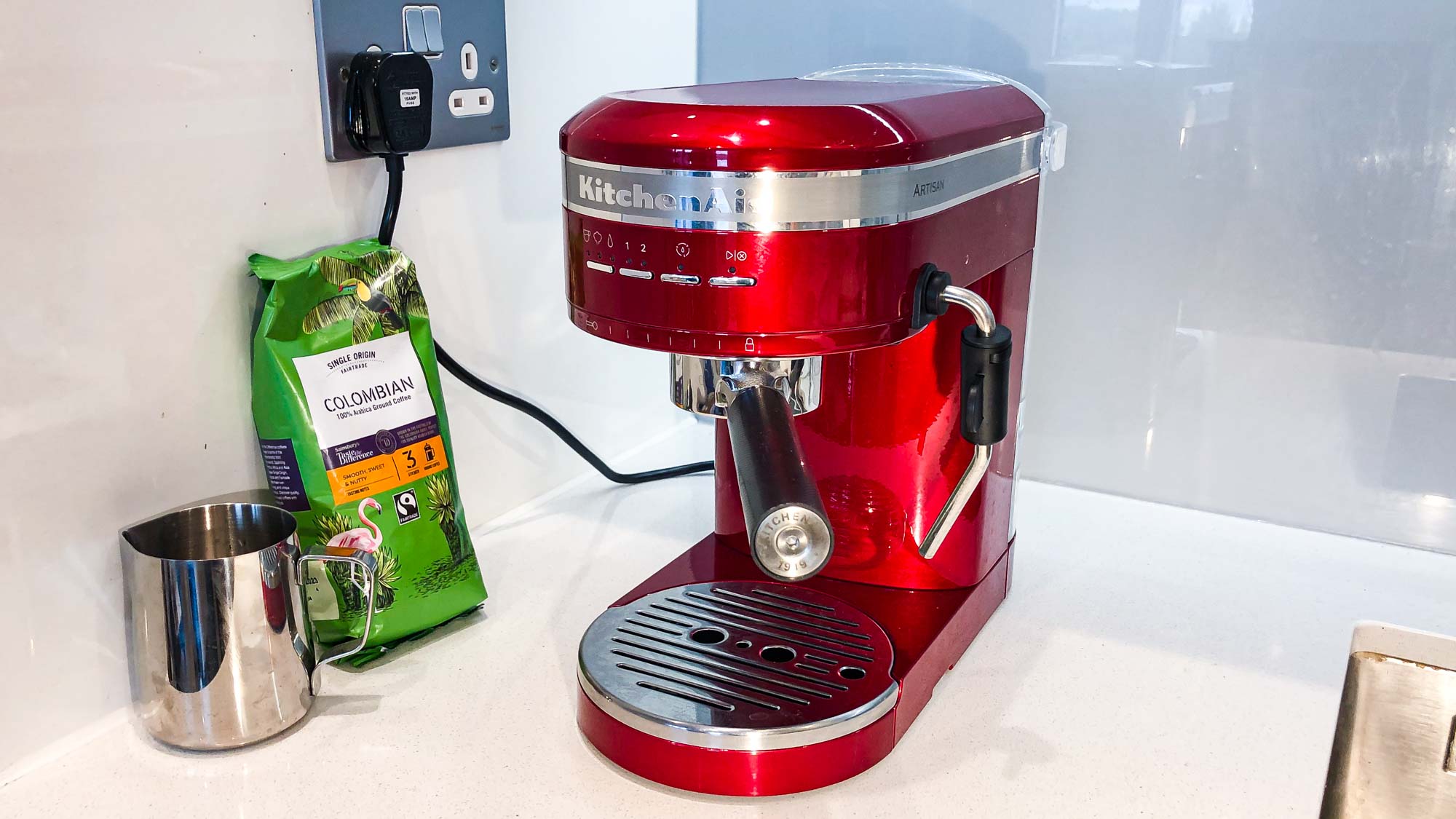
Still, the accessories supplied have a high-quality feel. Both the tamper and portafilter are heavily weighted, and the milk pitcher is a nice touch should you want the option to froth milk. There are enough settings to cover the basics as well — one and two shot options can be toggled at the press of a button, and there’s also the option to dispense steam or hot water. It’s worth flagging that you can program this espresso machine as well; you can set the espresso volume yourself and adjust the hot water volume, temperature (3 settings to choose from) and hardness. There’s a useful clean cycle button on offer too, which is designed to help with the descaling process.

The water tank can be found on the back of the machine. It is detachable and comes with a handle so you can lift it out of place to refill it. Bear in mind, this could be tricky to access if you’re got low overhead kitchen cabinets. The tank comes with a small lid that lifts out, although this is a bit loose and could perhaps be better fitted. There’s a max mark on the tank, which holds about 1.5 liters, but to my surprise, there was no minimum mark. This could be frustrating if you only wanted to brew one espresso.
Get instant access to breaking news, the hottest reviews, great deals and helpful tips.

The portafilter fits into the machine nicely, but as you lock it, it is all too easy to push the whole machine out of place. This sliding could be prevented if it were heavier or better gripped to the surface of the counter. It is a nice touch that the portafilter’s baskets come in a range to suit one or two shots, as well as freshly ground or pre-ground coffee. You need to change these between each brew as appropriate.
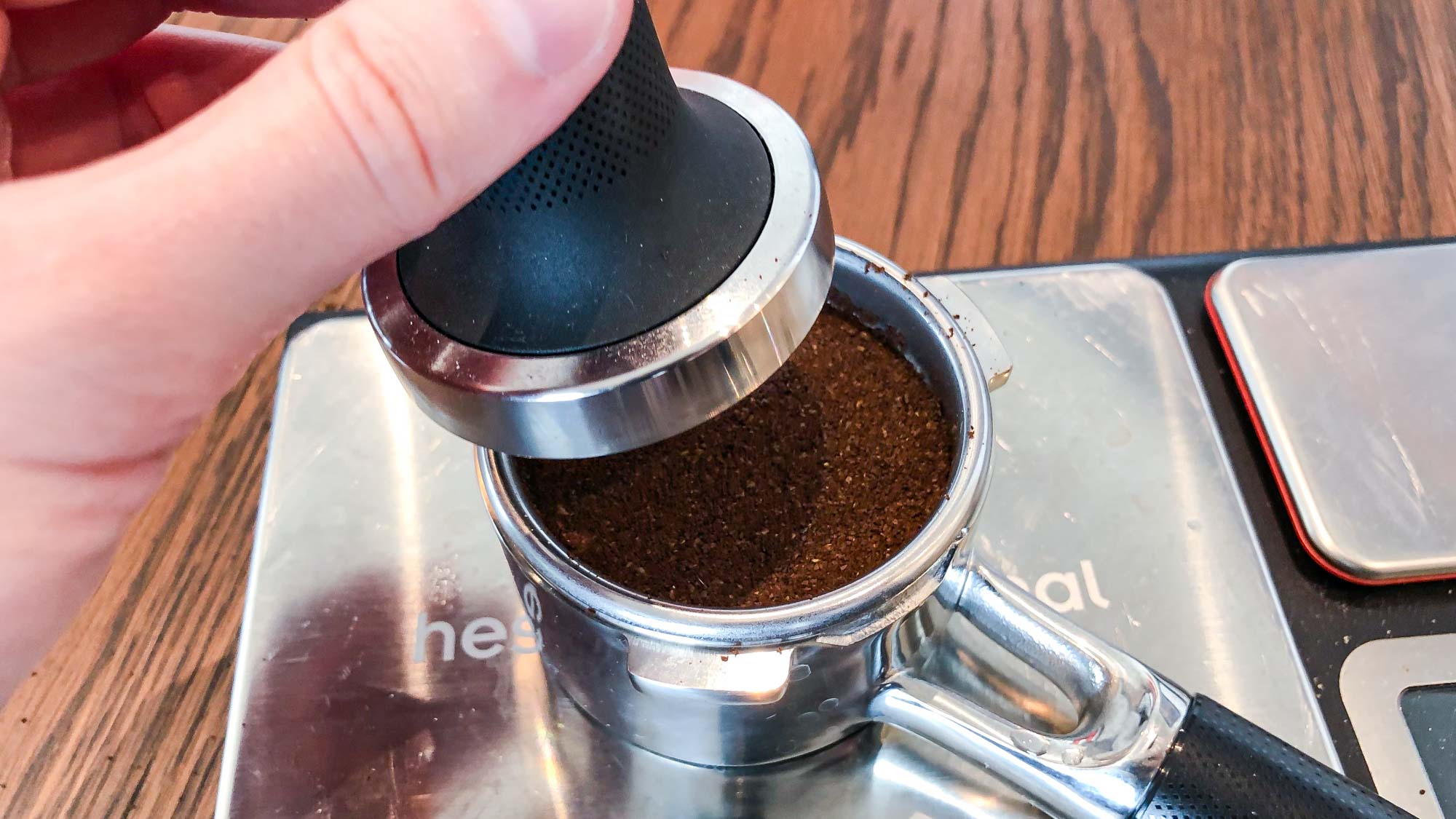
The KitchenAid Artisan Espresso Machine also comes with a couple of indicators to flag when it needs attention. There's a floating indicator in the removable drip tray to flag when it’s full and an indicator to show that the machine needs descaling (the clean cycle light begins blinking). However, there’s no indicator to show when the tank is running low on water, which is a shame. So, you can just keep running it until it hits empty and starts making an annoying noise. There’s an auto-off function as well, which will switch off the machine after about 15 minutes of inactivity.
KitchenAid Artisan Espresso Machine review: Performance
When I first switched on the KitchenAid Artisan Espresso Machine, it did not want to drain the water from the tank. I had to fiddle with the opening and repeatedly press the espresso function before it suddenly started to work — there haven’t been any issues with this since.
In terms of preparing the grounds for the machine, the process was very straightward, although it was all too easy to make a mess when filling and tamping enough for a double shot. It seems like the measurements were slightly too large to fit the portafilter in this case. In fact, because the portafilter was so overloaded, I even noticed that coffee grounds had transferred to the underside of the machine during the brewing process, which made a bit of a mess.
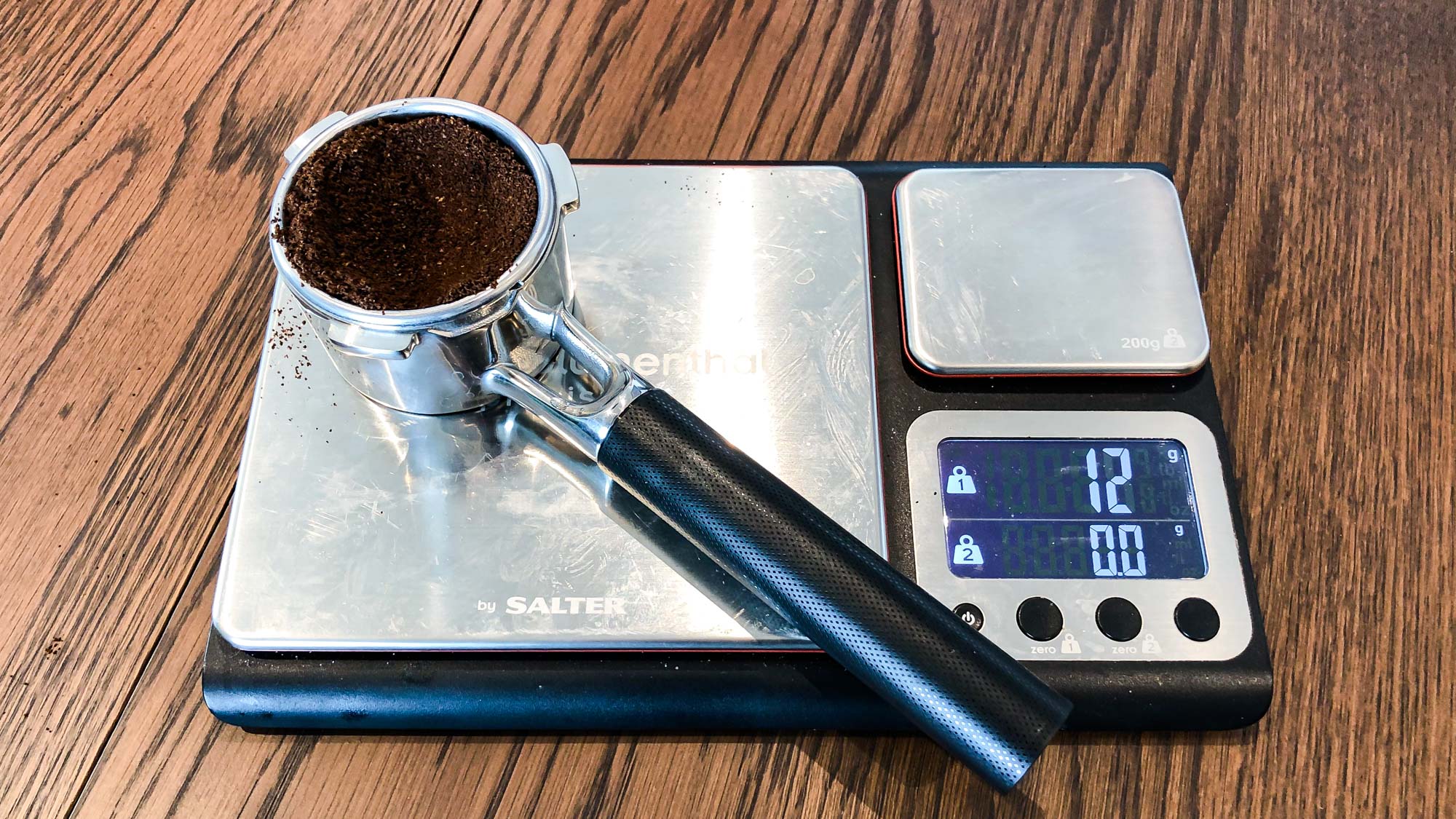
The KitchenAid Artisan Espresso Machine needs 37 seconds from powering on until it’s ready to brew and it uses up 0.009 kWh in this time. We used dedicated glass espresso cups during this test. However, due to the vibration produced during the brewing process, we did find that these had a tendency to shake out of place before the coffee flowed. We had to hold them still to catch the espresso — this is a major drawback because you can’t necessarily walk away from the machine as it brews, plus you need to keep your hand near hot, flowing espresso, which isn’t exactly safe. You would have to invest in bigger, heavier cups to rectify this.

Once brewing, one shot needed 31 seconds on average to pour, while two shots required 43 seconds, so not too long to wait. The immediate temperature of the single shot was 125°F, while the double was 136°F. This is a little cooler than we would like to see, but you can comfortably drink it right away. The machine produced 73dB of noise during brewing, so it wasn’t too noisy. In terms of flavor and consistency, the espresso was smooth and, although not as potent as bean to cup, it was still enjoyable, with a bitter finish combined with a creamy texture. The crema was full of flavor and the aroma was both strong and appetizing. In fact, the crema was so thick that it reformed after being cut with a spoon.
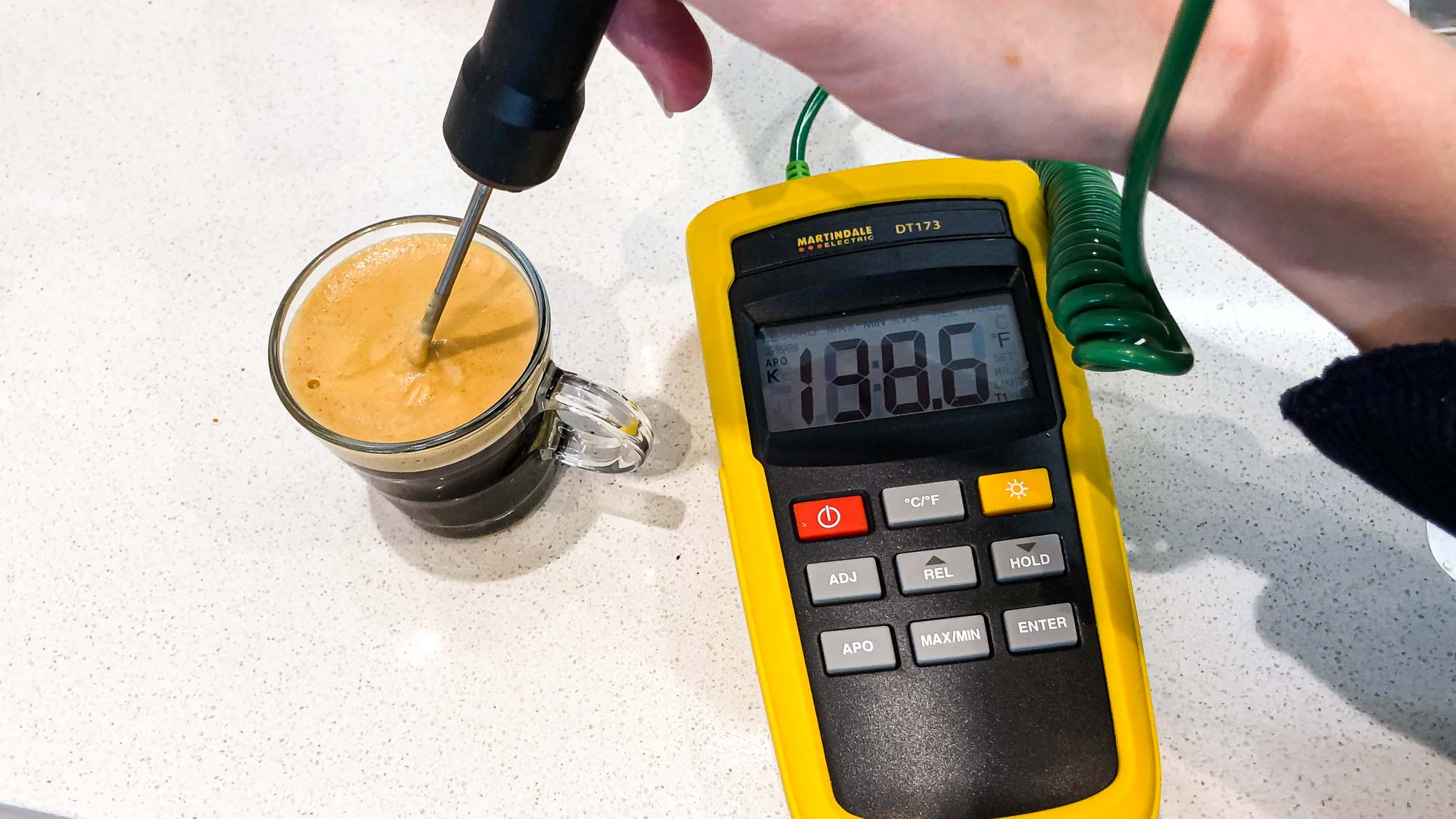
The machine didn’t get too hot to the touch as it brewed, reaching 89.5°F on top after pouring espresso, and 97°F after steaming milk. It required 0.013 kWh to brew one shot from switching on, and 0.016 to brew a double. The auto-off function, which kicked in after 16 minutes 27 seconds, means the espresso machine won’t use more energy than necessary.
I had a go at frothing milk with the KitchenAid Artisan Espresso Machine as well. I frothed 200ml of semi-skimmed milk in the supplied milk pitcher, which needed 2 minutes 20 seconds on average. The temperature reached just over 180°F in this time, while the noise produced clocked 104dB, which sounds noisy, however this is fairly normal for steaming milk.
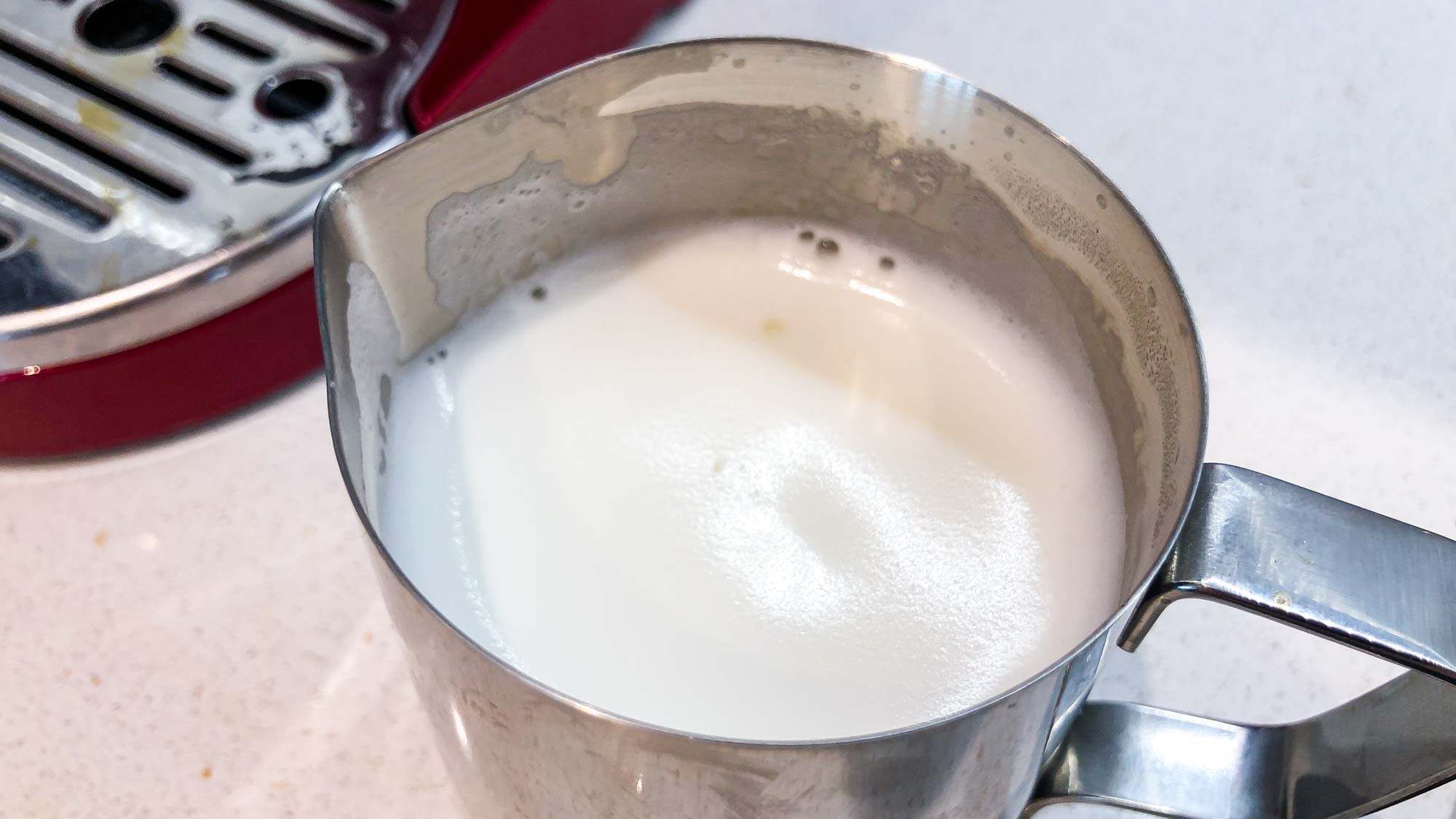
The steam wand is positioned at an awkward angle when you’re using a full pitcher of milk. It’s difficult to remove the pitcher when the milk is at a high level after frothing — to the point where you almost spill it. It’s actually quite a messy process on the whole, as the wand needs to heat the flowing water to the point that it steams before you can start, which takes about 20 seconds — so water fills the drip tray and leaks onto the kitchen counter before it’s ready to steam. However, the results were great — the milk was thick, with a velvety consistency and contained lots of bubbles.

I had a go at dispensing hot water as well. The steam wand dispenses a fine jet of hot water and takes its time, so it may not be suitable for tea lovers unless you're happy to wait. There are two volume options, 118ml and 177ml; the larger option needed 56 seconds to dispense. You will need to keep pressing the button if you're making a large cuppa because of this.
KitchenAid Artisan Espresso Machine review: Ease of use and cleaning
The controls on the KitchenAid Artisan Espresso Machine couldn’t be more intuitive. There are literally four buttons for operation — one to choose the setting, one for shot size, one for the clean cycle and one for start/stop. The only settings that are rather more complicated are the programming functions, such as changing the espresso volume or the water hardness or temperature, but you only need to do this once.
The water tank and its lid are easy to fit and remove — plus, it’s quick and painless to fill the tank from the sink. The drip tray simply slides out and back in as well. The steam wand rotates easily and the portafilter fits and locks without issue. It’s not easy to remove a full pitcher from the steam wand though, and emptying the drip tray can be fiddly and messy once it's full.
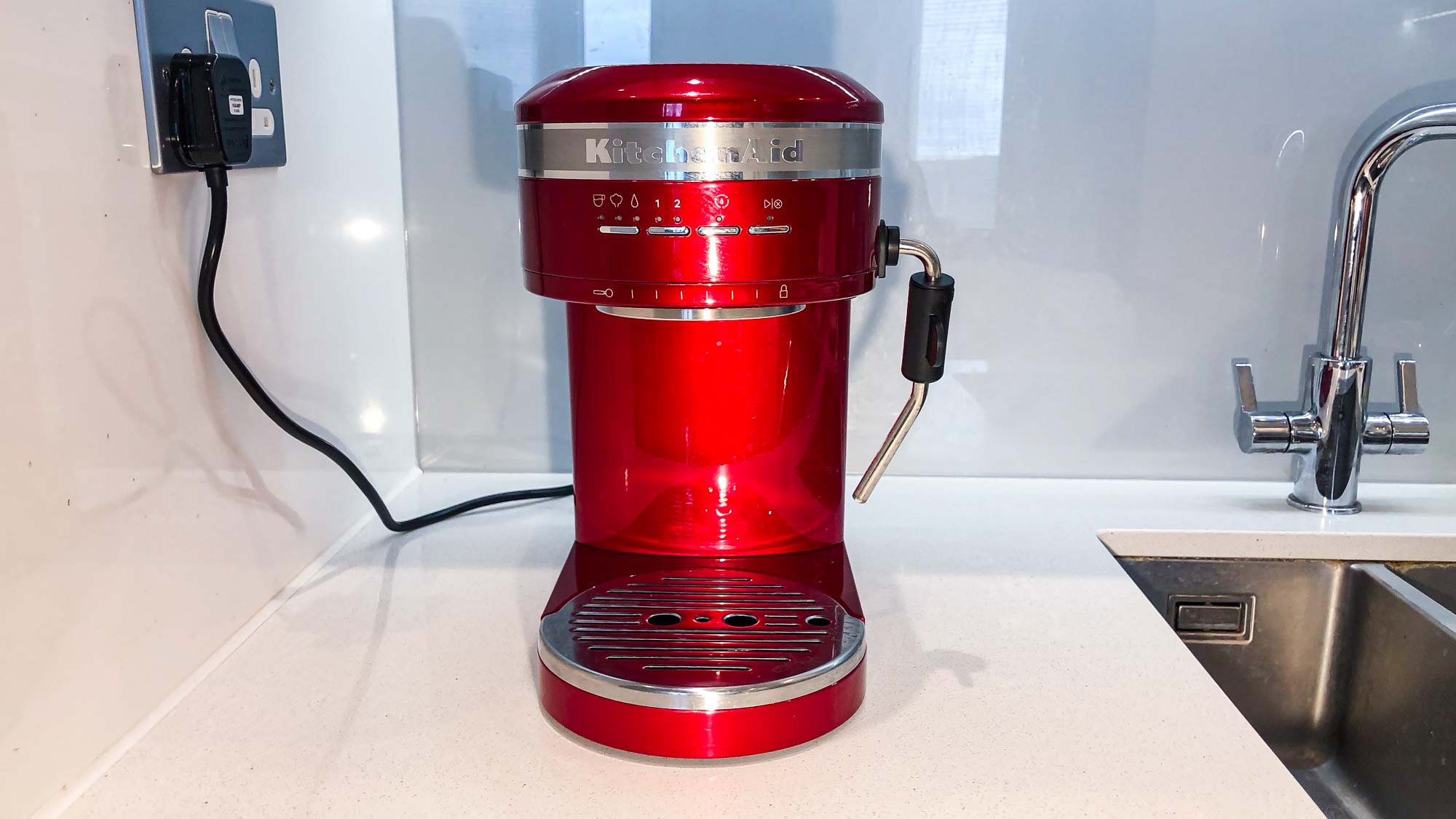
This espresso machine could also be easier to clean. Parts need to be hand washed and are not dishwasher safe, which is a shame, but there is a straightforward descaling program that’s useful. The exterior is straightforward to wipe clean with a microfiber cloth.
In terms of the manual, a one-page guide is provided to give you quantity suggestions for different beverages and the other side contains tips for using the machine. The manual itself is large and in many languages, but it is comprehensive with diagrams and tips to help. Step-by-step guidance is given as well as cleaning and troubleshooting advice.
KitchenAid Artisan Espresso Machine review: Verdict
On the whole, the KitchenAid Artisan Espresso Machine looks great and provides a decent performance, but the design is a little hit and miss. While it couldn’t get much more simple to operate, the fact that the espresso cups vibrate out of place is a big drawback. Plus, frothing milk with this machine is messy and takes time, so we wouldn’t recommend it if you drink cappuccinos daily.
Having said that, it’s a beautiful machine considering its price point and the design is pretty user-friendly otherwise. If you want an espresso machine which lets you take part in the brewing process and produces a delicious espresso, while adding some character to your countertop, this is the one to get. But, keep in mind you can get the winning Breville / Sage Bambino Plus machine for a similar price, which offers much more customization.
If you're interested in KitchenAid appliances you might also like to read the KitchenAid Artisan stand mixer is my best kitchen purchase ever — here's why and 5 KitchenAid attachments to get the most out of your mixer and where to buy them.

Katie Mortram used to be a Homes Editor for Tom's Guide, where she oversaw everything from kitchen appliances to gardening tools, as well as smart home tech. Specializing in providing expert advice for cleaning and home manintenance, she now works as Household Advice Editor for Good Housekeeping.
